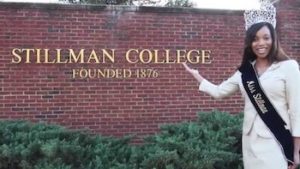
*The founding of Stillman College of Tuscaloosa, Alabama, is affirmed on this date in 1874. Stillman is a certified United Negro College Fund institution and one of over 100 Historical Black Colleges and Universities (HBCUs) in America. They began when a group of Presbyterians from Tuscaloosa, headed by the Reverend Doctor Charles Allen Stillman, presented an overture to the General Assembly of the Presbyterian Church in the United States asking the Church to establish a training school for African American male ministers.
Authorized by the General Assembly of the Presbyterian Church in the United States in 1875, Stillman held its first classes in the Fall of 1876 and was chartered as a legal corporation by the State of Alabama in 1895. In the years that followed, the young school enlarged its academic program. In 1898, the school, now named Stillman Institute in honor of Dr. Stillman, who had died in 1895, moved to its present location in the western section of Tuscaloosa.
The General Assembly of 1899 approved the opening of the school to all who wished to enter. This decision led to the second phase of Stillman’s growth. In the next five decades, with the aid of the Church and under the able leadership of Professor W.F. Osburn and Professor A.L. Jackson, the school grew in size and expanded in purpose.
During these years, the school acquired its campus tract of over 100 acres, organized a junior and senior high school, and established a junior college program accredited in 1937. Between 1930 and 1946, it operated a hospital and a nurses' training school. These accomplishments led into the third and present phase of Stillman’s history, which links Stillman’s continuing vital educational role and the changing face of the 20th-century South. This phase grew out of the following elements: the raising of educational aspirations created by the College’s concentration on Christian-inspired education rather than training for the ministry, the stiffening of state requirements for teaching certificates, and the gradual but inevitable increase in employment opportunities for African Americans.
With the administration of Dr. Samuel Burney Hay, from 1948 to 1965, the school sought to pursue a goal to which both the demands of the times and the developing concept of its educational purpose directed it, namely, a senior liberal arts institution. In 1948, the name was changed to Stillman College, and the following year, Stillman was expanded into a four-year college. Their first baccalaureate class in 1951 was accredited by the Southern Association of Colleges and Schools in 1953. Under Dr. Hay, seven new buildings were constructed: a gymnasium, a library, an administration-classroom building, two women’s residence halls, a prayer chapel, and a college center.
Dr. Harold N. Stinson, the first African American to assume the presidency, served from 1967 to 1980. New programs designed to improve educational quality were instituted, and new facilities included two men’s residence halls, faculty apartments, a maintenance building, and a mathematics science center. Snedecor Hall, Bachelor Building, and Birthright Auditorium were renovated. Dr. Cordell Wynn, the fourth President, served from January 1982 through June 1997. During Dr. Wynn’s tenure, Winsborough and John Knox Halls were renovated, and the Marie Lundy Wynn Hall and Johnson/Robinson Center were built. Also, enrollment grew beyond 1,000, and the educational program was broadened to include the Stillman Management Institute and a community service component. Dr. Ernest McNealey, the fifth President, assumed office in July 1997.